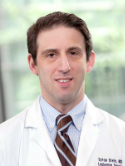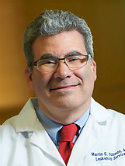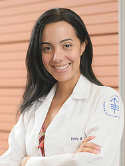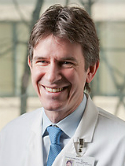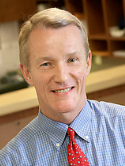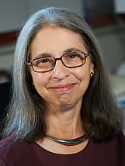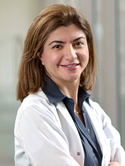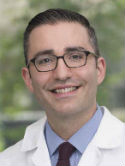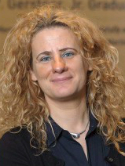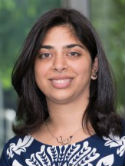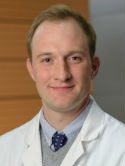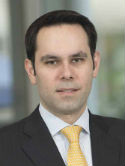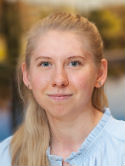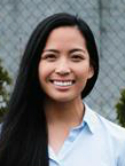Relapse after allogeneic stem cell transplantation of acute myelogenous leukemia and myelodysplastic syndrome and the importance of second cellular therapy Journal Article
| Authors: | Zuanelli Brambilla, C.; Lobaugh, S. M.; Ruiz, J. D.; Dahi, P. B.; Goldberg, A. D.; Young, J. W.; Gyurkocza, B.; Shaffer, B. C.; Ponce, D. M.; Tamari, R.; Sanchez Escamilla, M.; Castillo Flores, N.; Politikos, I.; Scordo, M.; Shah, G. L.; Cho, C.; Lin, R. J.; Maloy, M. A.; Devlin, S. M.; Jakubowski, A. A.; Berman, E.; Stein, E. M.; Papadopoulos, E. B.; Perales, M. A.; Tallman, M. S.; Giralt, S. A.; Smith, M. |
| Article Title: | Relapse after allogeneic stem cell transplantation of acute myelogenous leukemia and myelodysplastic syndrome and the importance of second cellular therapy |
| Abstract: | Patients with acute myelogenous leukemia (AML) or myelodysplastic syndrome (MDS) who relapse after allogeneic hematopoietic cell transplantation (allo-HCT) generally have poor overall survival (OS). Interventions that result in improved OS after relapse are not well established. The efficacy of second cellular therapy and specific indications are matters of debate. This study was conducted to evaluate factors associated with postrelapse survival and the efficacy of a second course of cellular therapy. We retrospectively analyzed consecutive patients with AML and MDS who underwent a first allo-HCT between 2010 and 2017 at our center but subsequently relapsed. One hundred and four patients with AML and 44 patients with MDS were included (total n = 148). Bone marrow (BM) and peripheral blood stem cell grafts were either unmodified or T cell-depleted (TCD) by CD34(+) selection ex vivo. Forty-five patients (30.4%) received a second cellular therapy after relapse, either a second allo-HCT (n = 28; 18.9%) or donor leukocyte infusion (DLI) (n = 17; 11.5%). The median age at transplantation was 60 years (range, 24 to 78 years). The median time to relapse (TTR) after transplantation was 6.5 months (range, 1 to 60.9 months), and the ensuing median OS was 6 months (95% confidence interval [CI], 4.8 to 8.9 months). In univariable analysis, longer TTR, relapse type (measurable residual disease versus morphologic), relapse occurring in the most recent years, and receipt of cellular therapy after relapse were associated with better outcomes, whereas adverse cytogenetics and/or abnormality of TP53, as well as NPM1 mutation in patients with AML, were associated with adverse outcomes. Relapse type, year of relapse, and a variable resulting from the combination of TTR and receipt of second cellular therapy remained significantly associated with postrelapse survival in multivariable analysis. In a separate multivariable model, adjusted only for TTR, relapse type, and receipt of second cellular therapy, an adverse effect of NPM1 mutation on survival was confirmed. We could not show an effect of post-transplantation maintenance on survival after relapse. In both univariable and multivariable analysis, we found a positive association for second cellular therapy with survival after relapse in patients who relapsed early (<6 months) after allo-HCT and a similar trend in patients who relapsed late (>12 months) after transplantation. Two-year OS after a second cellular therapy was 44.9% (95% CI, 28.5% to 61.4%), and it was significantly better in patients with <5% BM blasts before cell infusion. We could not show different effects on survival after second cellular therapy for DLI versus second allo-HCT in univariable analysis. Survival after relapse is improving over time, but this remains a challenging event, especially for patients who relapse early after transplantation. We found that a second cellular therapy could offer a benefit even in these cases. Nonetheless, more research is needed to clarify the most appropriate treatment choices after relapse. These are probably driven by underlying genetic and immunologic conditions, which should be the focus of future studies. (c) 2021 The American Society for Transplantation and Cellular Therapy. Published by Elsevier Inc. This is an open access article under the CC BY-NC-ND license (http://creativecommons.org/licenses/by-nc-nd/4.0/) |
| Keywords: | relapse; blood; myelodysplastic syndrome; donor; infusion; cell transplantation; recommendations; adults; prognostic-factors; versus-host-disease; risk-factors; acute myelogenous leukemia; acute myeloid-leukemia; aml; mds; donor leukocyte; allogeneic stem; second cellular therapy |
| Journal Title: | Transplantation and Cellular Therapy |
| Volume: | 27 |
| Issue: | 9 |
| ISSN: | 2666-6375 |
| Publisher: | Elsevier Inc. |
| Date Published: | 2021-09-01 |
| Start Page: | 771.e1 |
| End Page: | 771.e10 |
| Language: | English |
| ACCESSION: | WOS:000690339400015 |
| DOI: | 10.1016/j.jtct.2021.05.011 |
| PROVIDER: | wos |
| PUBMED: | 34033977 |
| PMCID: | PMC9236560 |
| Notes: | Article -- Source: Wos |
Altmetric
Citation Impact
BMJ Impact Analytics
MSK Authors
Related MSK Work




